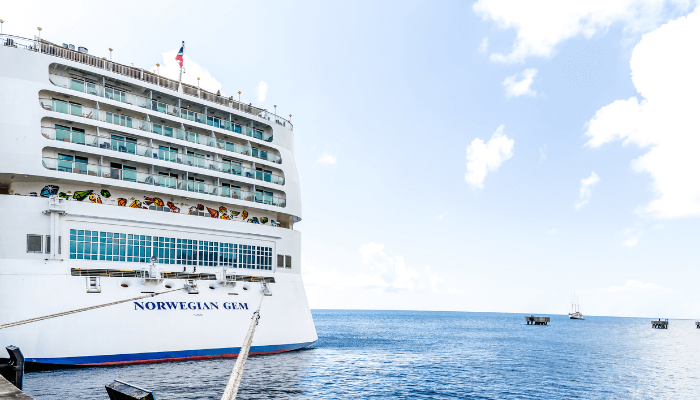A cruise major has reportedly circumvented a ban on its vessels entering the Venice lagoon by shuttling visitors into the city center on smaller motor boats.
Owned by Norwegian Cruise, Norwegian Gem is a vessel that is almost 300 meters long. It was anchored off Venice Lido on Saturday morning. Soon afterward, it launched multiple motor boats, which dropped off almost 1,500 passengers in St Mark’s Square before collecting them again during the evening.
The move, authorized by the port authority of Venice, is part of an experiment after the Italian government banned ships that weighed over 25,000 tonnes from docking at the UNESCO world heritage site last year.
It followed several years of protests that pitted ecologists and environmentalists, who viewed the vessels as causing harm to Venice’s fragile lagoon, against all those worried that it might impact an economy that relies on tourism.
Most cruise firms have since then rerouted to ports located in Ravenna or Trieste, from where guests who wish to take a tour of Venice can hop on a bus and enjoy a ride for nearly two hours. Only a handful is using Marghera, an industrial area close by, which was repurposed for cruise vessels as a temporary move.

Norwegian Gem was reportedly transiting through Venice when it reportedly dropped off its passengers for the day on boats provided by the port authority of Venice.
Venice’s governors did not have any influence regarding the matter. However, Simone Venturini, the tourism councilor, has warned against “hit-and-run” tourism. He further hoped that the Norwegian Gem tactic would not set a precedent. It is not the kind of tourism desired for the city; he informed the local press.
Italy prevented huge ships from accessing the Giudecca canal and entering Venice’s historic center in July last year. The 25,000-tonne limit indicates that only small freight vessels and passenger ferries can navigate the channel.
The decision followed years of protests against cruise vessels and a warning from UNESCO that Venice was at a high risk of being placed on the endangered list of world heritage unless the ship was banned permanently.
The Italian government, at the same time, issued a call for bids to construct a terminal outside the Venice lagoon to accommodate vessels that weigh over 40,000 tonnes.
Francesco Galietti, the director of Italy’s unit for Cruise Lines International Association (CLIA), reported that the ban left the maritime industry “in limbo.”
Suppose the experiment in Norwegian becomes the norm. In that case, it is unclear if cruise passengers must pay a landing fee that the Venice leaders will implement from 16 January next year.
The charge is aimed at day-trippers, who will have to go online and book the day they plan to visit Venice, paying between €3 and €10 per person, based on how busy the city is that day.
Transgressors risk fines as high as €300 if they’ve stopped and cannot show proof that they had booked and successfully paid with a QR code.
Nearly 80% of tourists in Venice come for just one day.
In 2019, the last full year of tourism before the Covid-19 pandemic, 19 million day-trippers had paid a visit to Venice and provided a fraction of the revenue.
References: The Guardian, News Magus